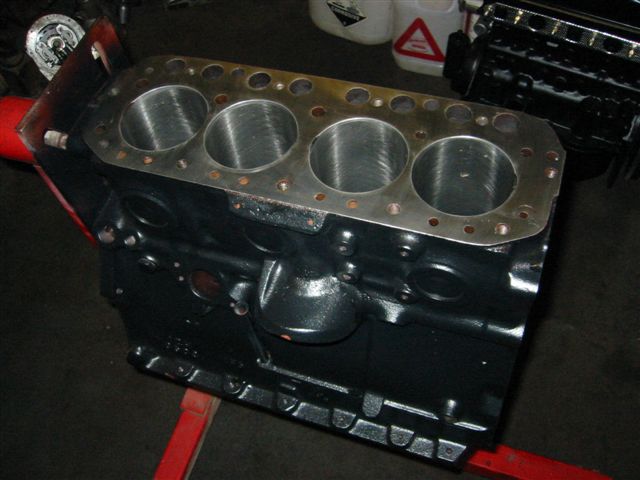 |
The
block, cleaned, fitted with new core plugs, painted and mounted on the
stand, ready to start - |
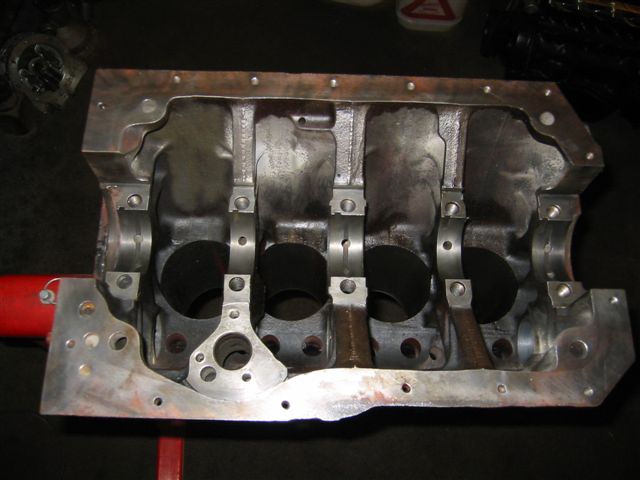 |
First,
turn it over and check all the main bearing housings for burrs and
anything that will prevent the main caps from seating properly.
Chase out the
threads using plug taps (ones that will go all the way into blind holes -
non taper) |
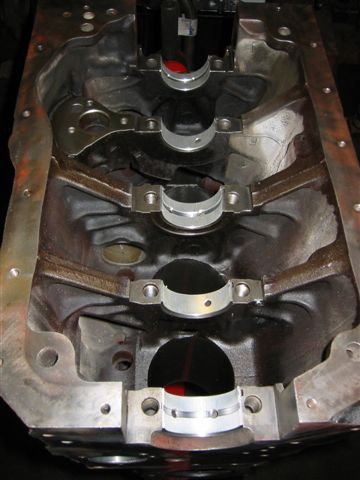 |
Fit
the main bearing shells, I like to locate the tag on the shells into its
slot and press down the opposite side till the bearing is snug.
|
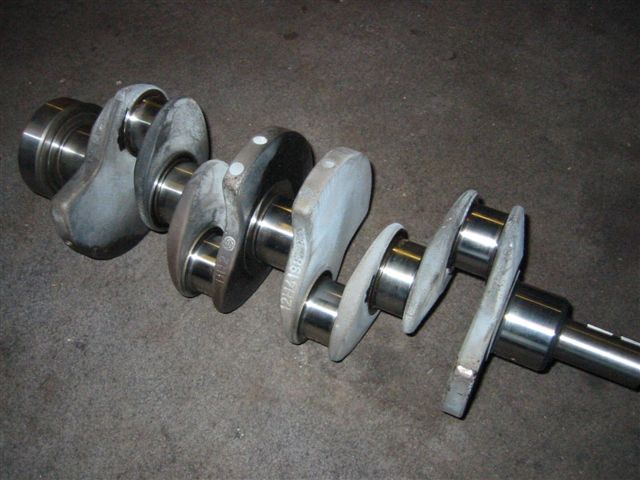 |
The
crank ready to fit - this one has been ground 10 thou on both mains and
big end journals - the thrust bearings are left standard. Note that the
rear of the crank where the rear oil seal fits has also been given a light
grind to remove the common groove - usually about 5 thou. |
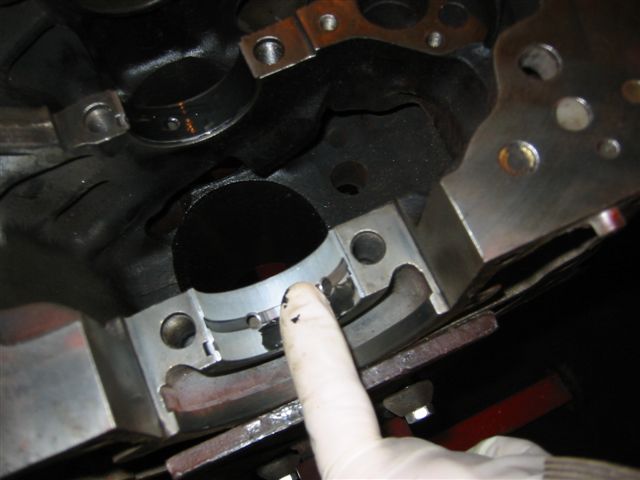 |
After
checking the running clearances, a light coating of Graphogen is applied
to the shells...... |
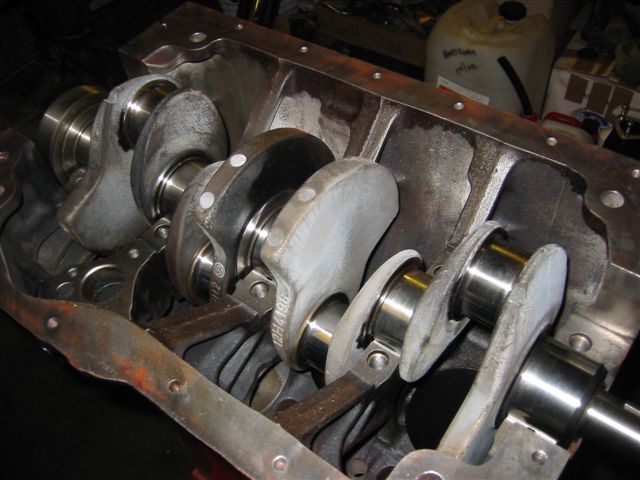 |
....
and the crank gently set in the block.
|
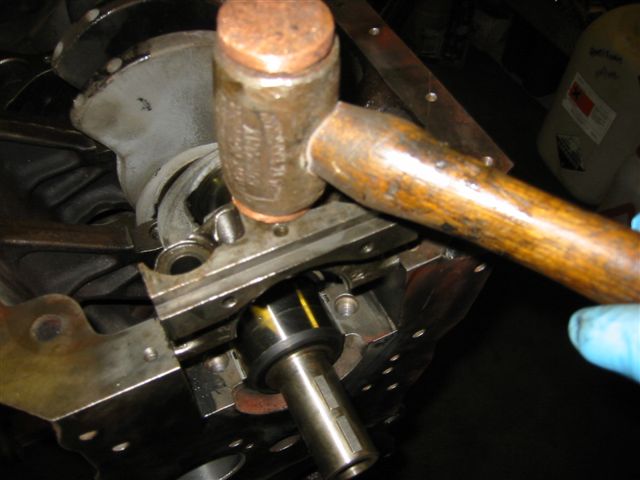 |
After
fitting the bearing shell into the cap and coating it with Graphogen, the
sides of the cap are also lightly coated and the cap driven into the block
with a copper hammer. |
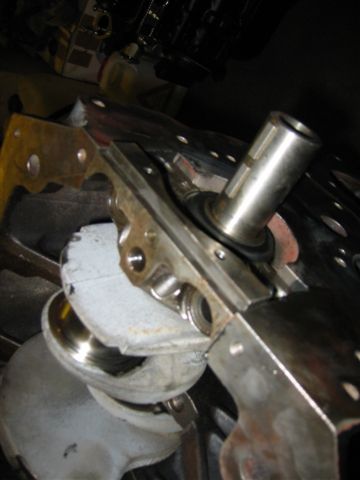 |
Once
fully down, you can see that it is not flush with the front
face........... |
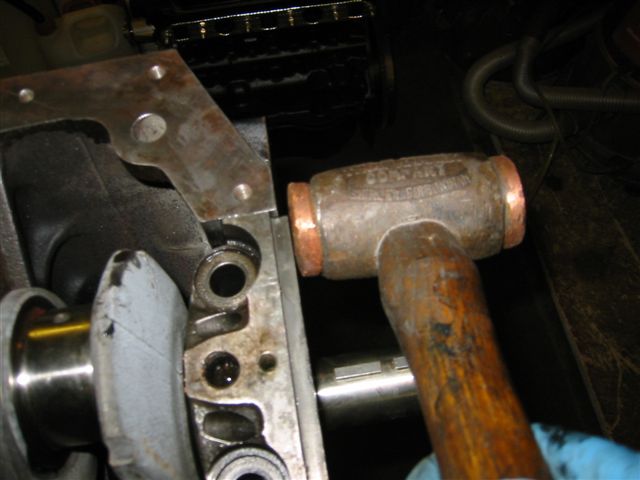 |
......
so light taps with the hammer, alternately on the front and top of the cap
drive it back until it is flush. |
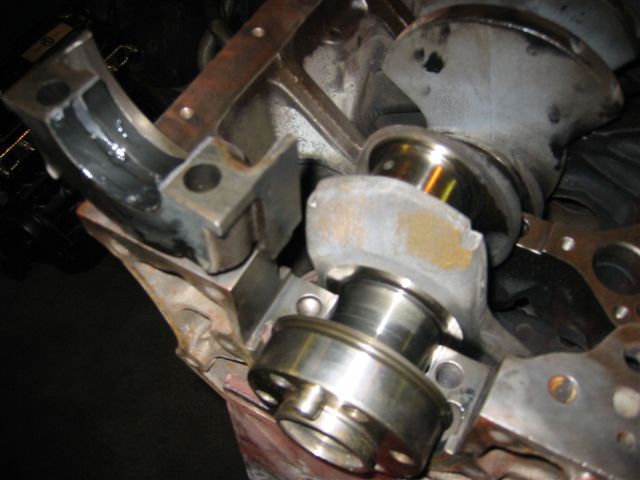 |
The
same procedure on the rear cap.....
|
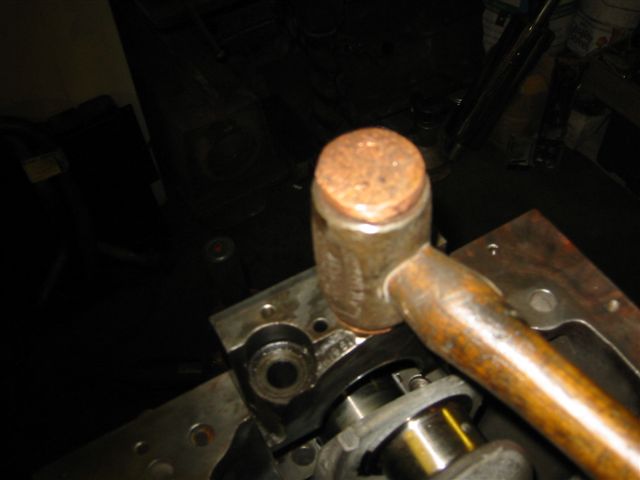 |
.......
down.......... |
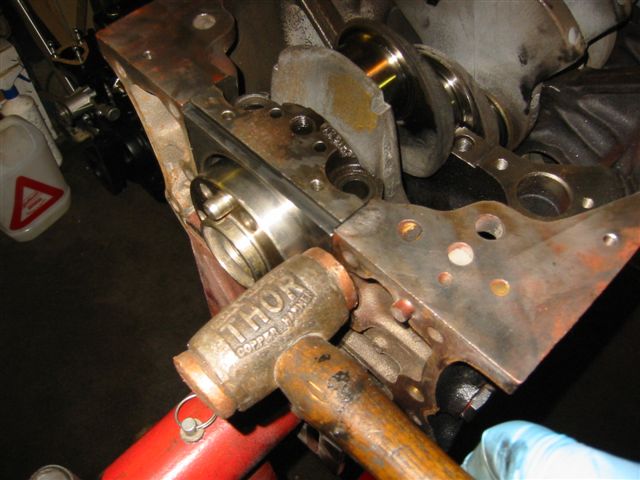 |
......
and forward, till flush........ |
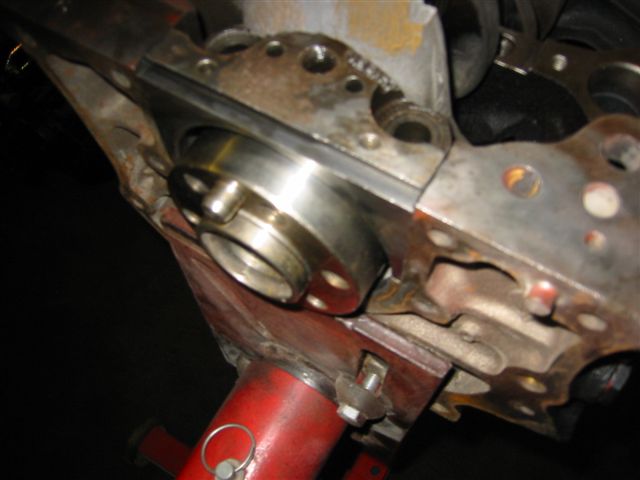 |
......
like this.
|
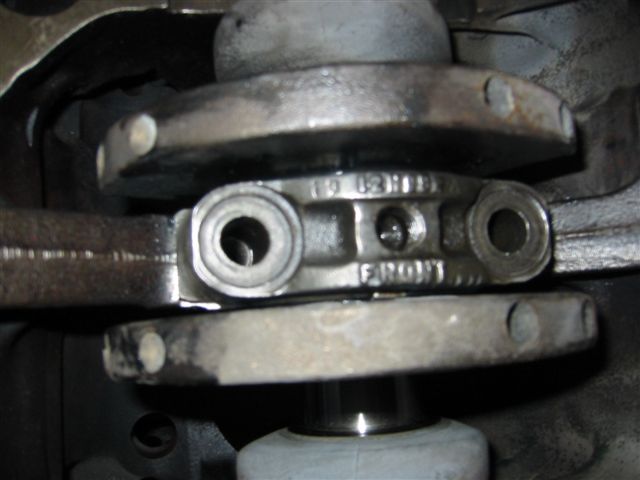 |
The
thrust washers (coated with Graphogen) are inserted either side of the
centre bearing - plain ones slide round the crank and the tabbed ones are
placed either side of the centre cap which is marked "front".
The number 2 and 4
caps are also marked "front" and "2" or "4"
on the area under the bolt head. |
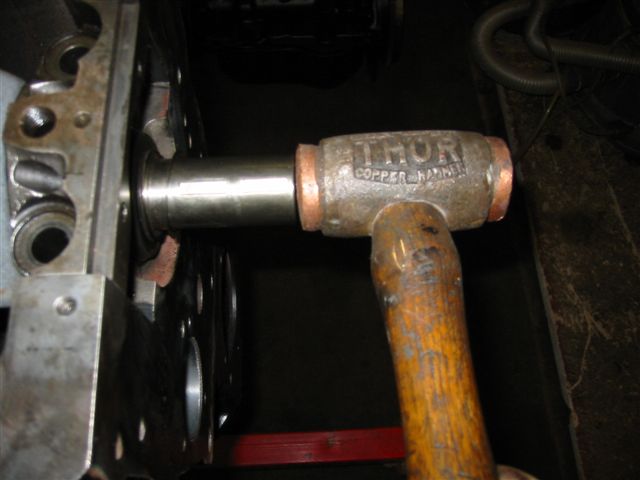 |
Once
the caps are fully in place, the crank is tapped back ........ |
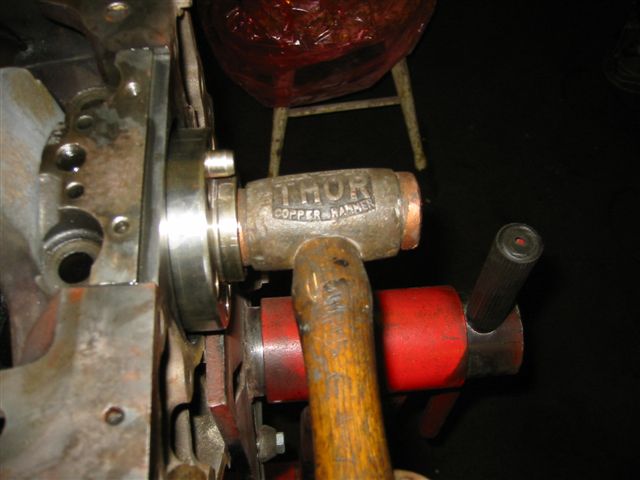 |
.......
and forward to centralise the centre cap and its thrust washers
..................
|
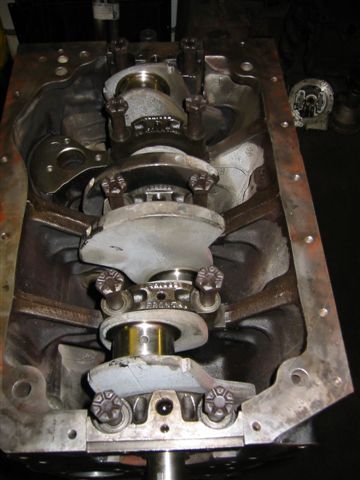 |
............
before fitting 10 new bolts ............. |
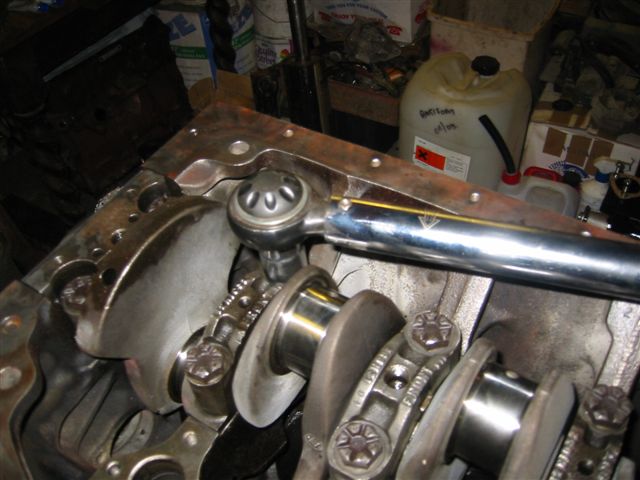 |
......
and torquing them up to 70 ft lbs.
After each cap is
tightened, check the crank is still free to turn - any stiffening needs to
be investigated and the cause rectified.
Next
section Back to
contents Back to Home page |